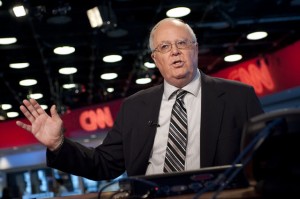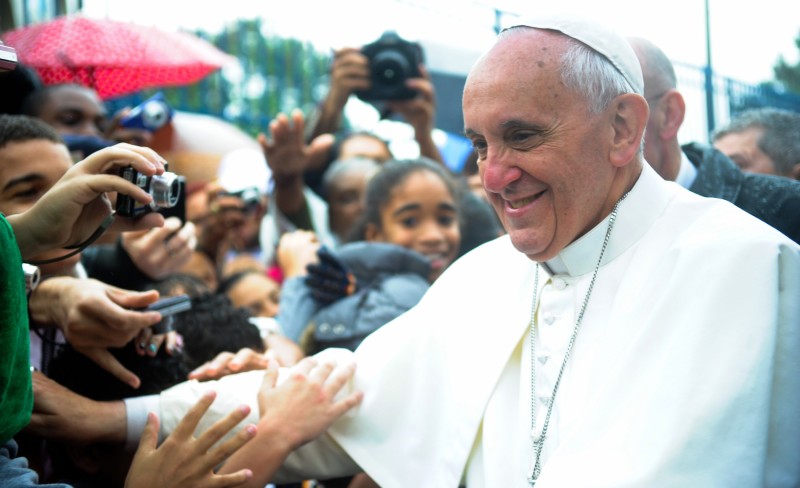Since the College of Cardinals elected Jorge Mario Bergoglio to the papacy, the global community has been eager to see if Pope Francis, who seemed far more liberal than his modern predecessors, would transform the Church in a significant way. As a South American Jesuit, the election of Francis was a possible sign that the Church was ready to reform and reflect more fully the views of many of its faithful currently disillusioned with some of the Vatican’s conservative social stances. And though Francis has certainly softened the papal tone, has he had much of an impact on bringing more American Catholics into the fold? The answer is complicated and may change as he takes more steps toward reform.
This week, Francis convened a synod, which is an assembly of the clergy, that could potentially enact substantial change within the highly bureaucratic and anti-reformist Catholic Church. Opening the synod, Francis implored those in attendance to stop distracting the public by focusing on irrelevant issues and instead encouraged them to discuss the legitimate concerns Catholics have with their faith. Francis hopes to take on the Church teachings that are unpopular among Catholics — specifically divorce and birth control — in the hope of realigning those teachings with the majority of Catholics. After a questionnaire sent to Catholic dioceses throughout the world showed the extent to which Catholics ignore Vatican teaching, it seems imperative to entertain a modification.
This is particularly true when it comes to the American Catholic Community, the vast majority of whom don’t find divorce or contraception unacceptable. In light of both public opinion in the United States as well as the Pope’s own rhetoric, it seems inevitable that the American Church would cede to Francis’s brand of Catholicism swiftly and in many ways, it has.
The US Conference of Catholic Bishops, the ruling body of American Catholic hierarchy and a fairly conservative organization, has embraced much of Francis’s new priorities and has tried to pay more attention to the wider concerns of American Catholics. During the Great Recession, the same body that once focused on aid to the impoverished effectively ignored the economic plight of some of its followers to instead warn the public about the dangers of same-sex marriage. But now, American bishops have begun advocating economic and social reforms, such as immigration reform, that they shied away from during Pope Benedict’s papacy.
These changes don’t mean that the America’s bishops have become as liberal as Francis. They are still far more conservative than he is and are still far more conservative than most American Catholics. Since the passage of the Affordable Care Act (ACA), the USCCB has focused almost entirely on protesting the contraceptive mandate. Though they obviously tended to other matters, the Church’s media coverage for years was centered on their stance against birth control. This was the norm during Benedict’s papacy and continues to a certain extent today, even though most Catholics in the United States do not have a problem with birth control use. Such obvious messaging problems contribute to Pope Francis’s efforts to liberalize the church.
Further illustrating this disconnect was the USCCB’s response to the Supreme Court decision to reject anti-same-sex marriage appeals. The Conference issued a statement bemoaning the Supreme Court’s failure to address “the injustice of marriage redefinition.” With almost 60 percent of American Catholics supporting same-sex marriage, the statement is evidence that the American Church has yet to fully emulate Pope Francis, who has avoided making such harsh statements, probably so as not to alienate or “judge” the LGBTQ community.
As a result, there is potential for serious conflict and division within the Catholic Church if Francis and the Vatican were to move in a more substantially different direction as opposed to the current shift in tone. Already, there are signs of the potential for discord.
When the Archbishop of New York and former President of the US Conference of Catholic Bishops, Cardinal Timothy Dolan, decided to remain grand marshal of New York’s St. Patrick’s Day parade despite the participation of a few gay groups in the parade with numerous restrictions, there was an outcry from American conservative Catholics. Bill Donahue, president of the Catholic League, wrote that the decision to allow gays to march and Dolan’s implicit sanction of it was a signal that homosexuals were attempting to remove religion from St. Patrick’s Day and that the Church was condoning it. A monsignor in Washington, DC wrote a blog post advocating an end to St. Patrick’s Day parades and suggesting that Catholics instead go to church and pray for forgiveness. Similarly, a Catholic commentator, Rob Dreher, wrote that Dolan “alienated” those who had once been his supporters.
If the inclusion of LGBTQ groups — which were barred from engaging in any kind of activism — in a parade created so much controversy within the US Catholic community, a more substantial rather than rhetorical shift could be incredibly problematic for the Church.
Similarly, a shift towards liberalism in the community of American nuns has created significant controversy for American bishops and the Vatican. An organization that represents most of America’s nuns, the Leadership Conference of Women Religious, has as of late begun advocating for liberal and in Catholic terms, heretical, causes on a national scale. The group has of late not only supported feminist sisters but also defended theologians at odds with Catholic teaching on same-sex marriage, the all-male priesthood, the gender of God and contraception.
These nuns have been under surveillance by the Vatican since Pope John Paul II initiated the investigation decades ago. Under the papacy of conservative Benedict XVI, the investigation was pursued with more fervor. Following Francis’s election, the LCWR hoped that the new liberal “Vicar of Christ” would ease off on criticizing and prosecuting the group. However, likely due to pressure from conservative clergy within the Vatican and in the United States, Francis has allowed investigations to continue, forcing the LCWR to limit their media presence in the hopes of avoiding being seriously punished.
Despite Francis’s decision to stand opposed to the radical interpretations of canon law that some LCWR members have advocated, American nuns still seem emboldened to enact liberal change. The Nuns on the Bus have again begun to drive across the US, this time in support of immigration reform, and have faced no significant criticism from the American Catholic hierarchy since the tour started.
Whereas two years ago American Catholic institutions were in the news for rejecting the contraceptive mandate of the ACA and punishing progressive nuns, they are now getting coverage on their communal push for immigration reform.

It is important to remember that the goal of Francis’s efforts to recast cannons of Church teaching is to bring Catholics back to the Church. Now that the American Catholic community is liberalizing, albeit slowly, have more people been inspired to return to church pews? It seem like the answer is no. Although American Catholics are more excited and enthused with the direction of the faith — 71 percent believe is changing in a major way — attendances at mass and at confession have stayed low.
Pope Francis’s meager impact on mass attendance could possibly be attributed to the lack of substantial change. Though the rhetoric has softened, and become more friendly and welcoming, Church teachings have yet to fundamentally change. Without this kind of change, American Catholics may never be enthused enough to go back to church. However, if Francis and the American Catholic hierarchy decide to liberalize, they risk alienating a large group of practicing Catholics who attend mass currently and see the changes as an affront to traditional moral values. In Pope Francis’s pursuit to widen the Catholic Church’s appeal in the modern world, he runs the risk of leaving many of the most devout behind.
